How to Choose the Best Algo Trading Strategy for Your Risk Profile

In today’s fast-paced financial landscape, algorithmic trading—or algo trading—has transformed how retail and institutional traders participate in the markets. From equities and commodities to options and futures, automated strategies are used to capitalize on real-time opportunities while managing risk efficiently. If you're searching for the best online trading platform, the best broker in India, or simply exploring the best algo trading strategy that fits your investment style, understanding your risk profile is the critical first step.
Selecting a trading strategy without assessing your personal risk appetite can lead to poor financial decisions and unnecessary losses. This blog will guide you through the essential steps to choosing an algo trading strategy that aligns with your goals, capital, and comfort with risk.
Understanding Your Risk Profile
Before diving into the complexities of algorithmic strategies, it’s important to understand what a risk profile is. Your risk profile defines your ability and willingness to take financial risks in exchange for potential returns. Several factors shape this profile, including:
-
Capital availability
-
Time horizon
-
Investment goals
-
Emotional resilience to market volatility
-
Trading knowledge and experience
Types of Risk Profiles
-
Conservative: Prefers low-risk investments with stable, consistent returns.
-
Moderate: Willing to take calculated risks for moderate returns.
-
Aggressive: Comfortable with higher risks for the potential of high returns.
Knowing which category you fall into will help you choose the right algorithmic approach that won’t keep you up at night.
Popular Algo Trading Strategies and Their Risk Levels
Understanding how different algo strategies work is essential for matching them to your risk profile. Here's a breakdown of the most commonly used strategies in algorithmic trading and who they’re best suited for:
1. Trend Following Strategies (Moderate to Aggressive)
These strategies identify and ride market trends using technical indicators like moving averages and momentum oscillators.
-
Risk Level: Medium to high
-
Best for: Traders who can tolerate temporary drawdowns and are not looking for instant gains
2. Mean Reversion Strategies (Moderate)
Based on the idea that prices revert to their historical averages over time, these strategies use indicators like RSI and Bollinger Bands.
-
Risk Level: Moderate
-
Best for: Traders who expect markets to self-correct and value technical signals
3. Arbitrage Strategies (Low to Moderate)
These aim to exploit price discrepancies between assets or markets, often requiring fast execution and high capital.
-
Risk Level: Low to moderate
-
Best for: Risk-averse traders with access to low-latency systems and sufficient capital
4. Market Making Strategies (Moderate)
Involves placing simultaneous buy and sell orders to profit from the bid-ask spread. These strategies often work well in high-volume environments.
-
Risk Level: Moderate
-
Best for: Traders with good infrastructure and risk controls
5. High-Frequency Trading (HFT) (Aggressive)
HFT uses powerful algorithms and high-speed data feeds to execute thousands of trades in milliseconds.
-
Risk Level: High
-
Best for: Highly experienced and aggressive traders with a deep understanding of market microstructure
How to Match Strategy With Your Risk Profile
Now that you know the strategies and their risk levels, the next step is to match the right strategy to your personal risk appetite. Here's how:
Step 1: Assess Your Risk Capacity
Take a thorough look at your available capital, time commitment, and ability to withstand losses. For instance, someone nearing retirement may prefer conservative, low-risk strategies, while younger traders might lean toward aggressive ones.
Step 2: Choose a Strategy Based on Volatility and Holding Time
-
Short-term, high-frequency strategies often carry higher risk.
-
Longer-term strategies such as trend-following may provide smoother equity curves for moderate-risk investors.
Step 3: Backtest Your Strategy
Use historical market data to test your algorithm. Backtesting shows how the strategy would have performed in the past, helping you identify its strengths and weaknesses.
Step 4: Use Paper Trading Before Going Live
Simulate real-time market conditions without risking actual money. Most platforms allow you to run your algorithm in a virtual environment for better learning.
Step 5: Diversify or Adjust
Even within algorithmic trading, you can diversify by running multiple strategies tailored to different market conditions. Diversification helps reduce overall risk.
Tools and Platforms to Evaluate Algo Strategies
To make effective trading decisions, you need the right tools and infrastructure. Look for platforms that offer:
-
Robust backtesting engines
-
High execution speeds
-
Customizable indicators
-
Live market data feeds
-
Risk management modules
The best algo trading strategy is only as good as the platform it’s built on. When searching for the best online trading platform, ensure it supports automation, offers transparency in fees, and has strong support for risk management.
A full-service broker like Mastertrust, which offers services across equities, online commodity, options and futures, fixed income, and wealth management, can be a good starting point for algo traders. Their tools are often integrated with popular charting platforms like Trading View, giving you both the analytics and execution power you need.
Mistakes to Avoid When Choosing an Algo Strategy
Even the most advanced algorithms can fail if not used properly. Here are common mistakes to steer clear of:
1. Ignoring Your Own Risk Profile
Don’t use a high-frequency strategy if your nerves can’t handle large drawdowns.
2. Chasing Unrealistic Returns
Many beginners pick the most aggressive strategies, hoping for fast profits—often leading to big losses.
3. Failing to Backtest Thoroughly
Without proper testing, you have no idea how your strategy will react to different market conditions.
4. Overfitting the Strategy
A strategy optimized only for historical performance might fail in real-time trading. Keep your model simple and generalizable.
5. Not Monitoring Your Strategy
Algo trading is not “set it and forget it.” Market conditions change, and your strategy needs regular reviews and adjustments.
Final Tips for Choosing the Right Strategy
-
Start small: Begin with one strategy and monitor its performance over time.
-
Use stop-losses and position sizing: Always implement strict risk controls.
-
Stay informed: Market dynamics evolve. Read, research, and refine your approach.
-
Be patient: Even the best strategies take time to yield consistent results.
The right strategy balances your expectations, experience, and capital with market behavior. Take time to refine your understanding and don’t rush the decision-making process.
Conclusion
Choosing the best algo trading strategy is not about finding the most profitable model—it's about finding the one that best aligns with your risk profile. Whether you're a conservative investor focusing on arbitrage, or an aggressive trader experimenting with trend-following or HFT strategies, the right approach will always depend on your personal goals and limitations.
If you're seeking the best online trading platform or the best broker in India to support your algo trading journey, ensure they offer comprehensive tools, real-time support, and access to multiple asset classes. With the right preparation, disciplined execution, and strategic alignment, algo trading can become a powerful tool in your investment toolkit.
- Vibnix Blog
- Politics
- News
- Liberia News
- Entertainment
- Technology
- EĞİTİM BİLGİLERİ
- Art
- Causes
- Crafts
- Dance
- Drinks
- Film
- Fitness
- Food
- Oyunlar
- Gardening
- Health
- Home
- Literature
- Music
- Networking
- Other
- Party
- Religion
- Shopping
- Sports
- Theater
- Wellness


